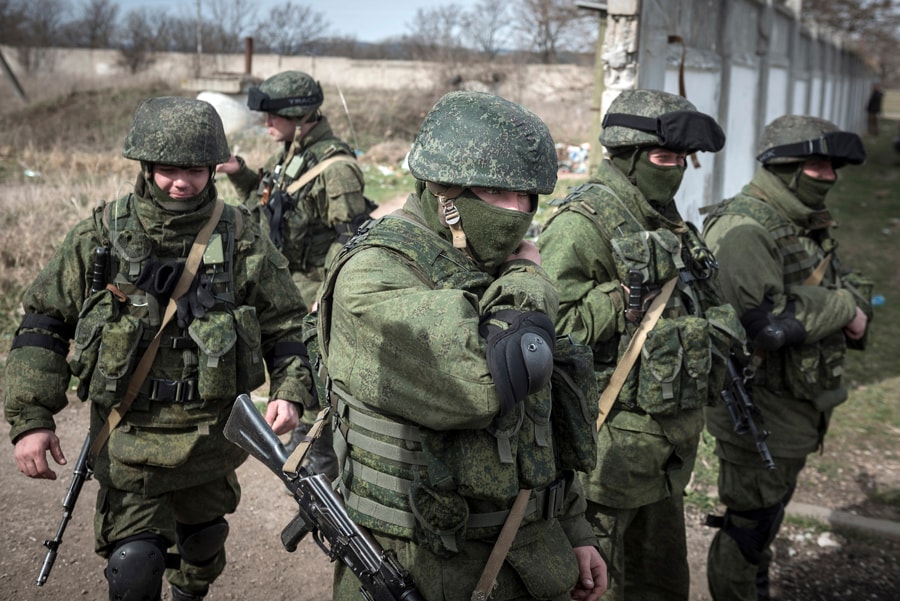
Blitzkrieg or minor incursion? Putin's choice could determine world reaction
International condemnation would follow, although Putin may be betting that it would not last long, and that the world would gradually get accustomed to a new, larger Russia reconstituting the sphere of influence that was once the hallmark of the old Soviet Union
 Russian soldiers with no insignia on their uniforms Perevalne, in the Crimea region of Ukraine, on March 6, 2014. After the uprising in 2014, Russian troops wearing unmarked uniforms invaded Crimea, a strategically important peninsula on the Black Sea. (Sergey Ponomarev/The New York Times)
Russian soldiers with no insignia on their uniforms Perevalne, in the Crimea region of Ukraine, on March 6, 2014. After the uprising in 2014, Russian troops wearing unmarked uniforms invaded Crimea, a strategically important peninsula on the Black Sea. (Sergey Ponomarev/The New York Times)
MUNICH — When President Joe Biden declared Friday he was convinced President Vladimir Putin of Russia had decided to attack Ukraine “in the coming week, in the coming days,” the skeptics among American allies suddenly fell quiet. Hours before, Biden had informed them that U.S. intelligence agencies had just learned that the Kremlin had given the order for Russian military units to proceed with an invasion.
Now the debate has shifted to how Putin will do it: in one massive nationwide attack; a series of bites that dismantle the country, piece by piece; or a pythonlike squeeze. That last option is made all the easier with the news Sunday morning that Belarus is allowing Russian troops to remain indefinitely, where they can menace Kyiv, the Ukrainian capital. Putin might be betting that he can shatter Ukraine’s economy and oust its government without having to immediately roll in tanks.
Putin’s strategic choices over the next few weeks may make a huge difference in how the world reacts.
If he strikes to take the whole country in a single blow — the approach that senior U.S. military and intelligence officials and many outside analysts now think is the most likely — it could provoke the largest, most violent battle for European territory since the Nazi surrender in 1945.
There is little question that the full package of sanctions and technology export cutoffs would be invoked almost immediately. International condemnation would follow, although Putin may be betting that it would not last long, and that the world would gradually get accustomed to a new, larger Russia reconstituting the sphere of influence that was once the hallmark of the old Soviet Union.
©2019 New York Times News Service







